Renfrew Ravine is one of the last wild ravines in Vancouver, situated just north of the 29th Ave Skytrain station, and south of Renfrew Community Park. Its wildness and steepness makes it one of the city’s less-accessible parks, but if you pause along its flanking paths, squint through the fluttering alder leaves, and listen, you can see and hear Still Creek gurgling below in the ravine’s cool, shady depths.
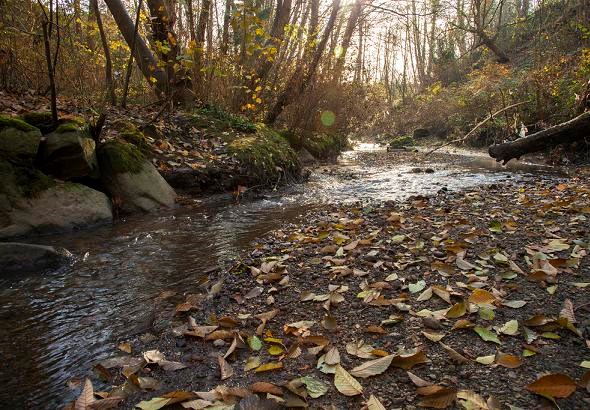 Still Creek (photo by Mychaylo Prystupa for Evergreen BC)
Still Creek (photo by Mychaylo Prystupa for Evergreen BC)
The fact that Renfrew Ravine still exists at all is amazing. At the time of European settlement in Vancouver, there were over 50 such streams and lush riparian forests murmuring through the city. This part of the ravine and its creek managed to escape the fate of the others, which were methodically filled in and buried deep underground (even today, Renfrew Ravine is still identified on several city maps as a right-of-way for an extension of Renfrew Street). In the 1970s city policies on the waterways changed, and Vancouver’s last few streams made it out alive.
Well, mostly alive.
By that time all of upper Still Creek’s tributaries, except one small piece still in Central Park, were absorbed into the city’s storm sewer infrastructure. The towering red cedars and salmon were gone, and in their place grew alders, cottonwoods, and tangled thickets of invasive Himalayan blackberry and English Ivy. It also remained a conduit for sketchy sewer hook-ups and a dumping ground for garbage.
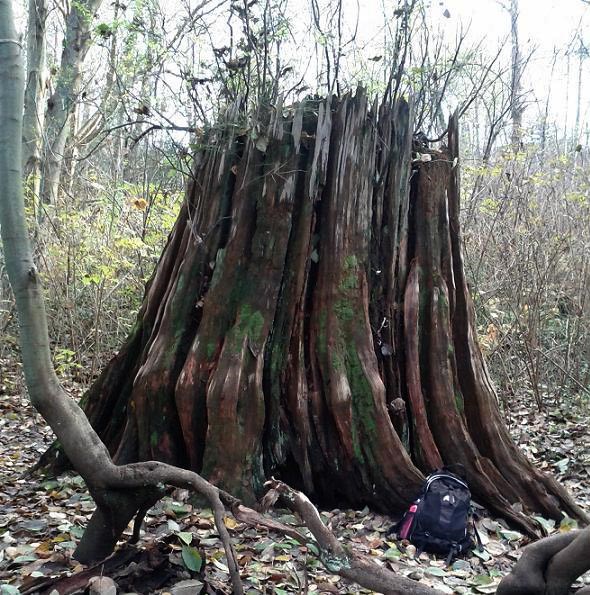 Big cedar stump in the Renfrew Ravine (photo by Sarah Primeau)
Big cedar stump in the Renfrew Ravine (photo by Sarah Primeau)
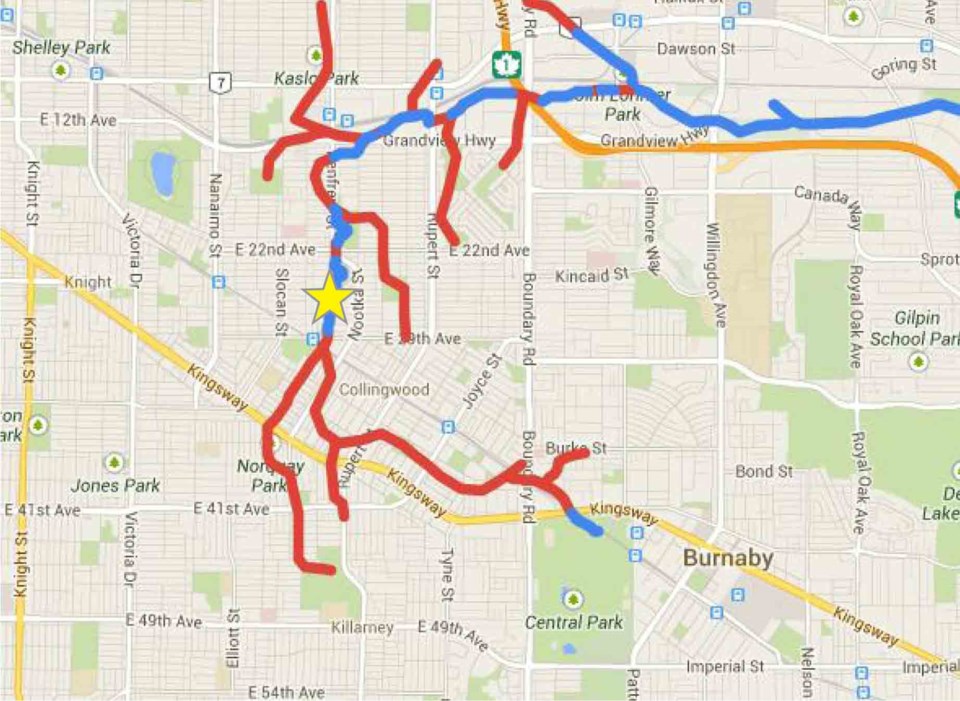 The star marks the location of Renfrew Ravine, in East Vancouver. Red lines are lost or buried parts of Still Creek’s tributaries.
The star marks the location of Renfrew Ravine, in East Vancouver. Red lines are lost or buried parts of Still Creek’s tributaries.
In the early 1990s, however, the community began to recognize the potential beauty and ecological value of the ravine. Led initially by a committee from Collingwood Neighbourhood House, and later by Carmen Rosen and , a growing number of community members and local students from Windermere Secondary joined forces to rediscover the ravine. They filled multiple dumpsters each year, and when volunteers began running out of garbage they turned to removing the invasive plants. In 2003 they started the much-loved Renfrew Ravine Moon Festival to bring thousands of people together every year in a celebration of art and ecology.
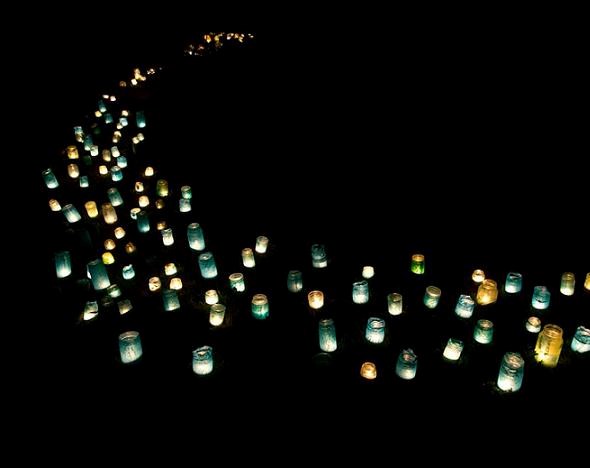 Moon Festival (photo by Sarah Primeau)
Moon Festival (photo by Sarah Primeau)
Evergreen BC has joined forces with Still Moon Arts for the last two years as part of the “” program. Dana McDonald, Urban Ecology Project Manager, engages throngs of volunteers (myself included) on the last Sunday of every month to remove invasive species, plant native ones, and to sample water quality in Still Creek. And with the Parks Board’s recent approval of the , the park is assured to see even more ecological enhancements in the coming years, along with river lookouts and a carefully-routed trail. With this work and continued daylighting, might even be able to take advantage of the future habitat improvements.
 Ivy removal: before, during and after at the ravine
Ivy removal: before, during and after at the ravine
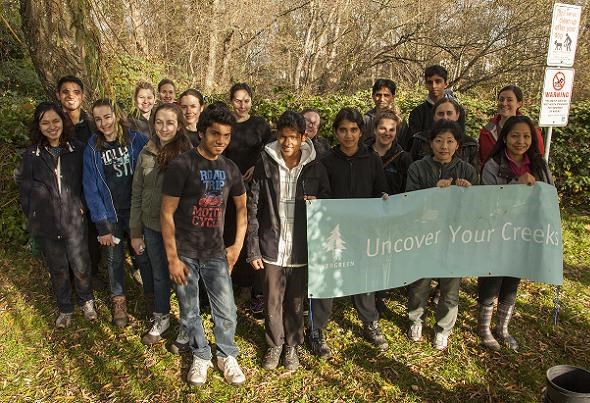 Satisfied volunteers after a morning of ivy busting
Satisfied volunteers after a morning of ivy busting
As Carmen recently shared in her , the challenge she sees now is to learn how to not only turn our natural areas like Renfrew Ravine into healthy ecosystems, but to re-envision the entire community as a healthy and vibrant ecosystem – if we succeed in doing that it will be better for the fish, and better for us too.
Thankfully we still have Renfrew Ravine, where it’s easy to envision how our city can indeed become a healthy and vibrant ecosystem again.
Find me on twitter for more stories about nature in the city


